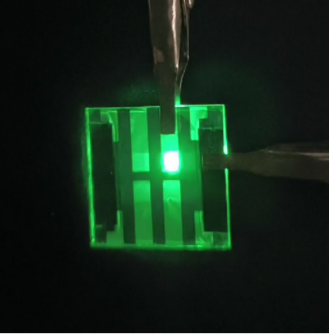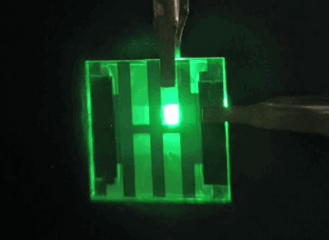Technology
Researchers Develop Ultra-Thin LED That Mimics Natural Sunlight

Researchers have unveiled a groundbreaking innovation in lighting technology: a paper-thin LED that emits a warm, sun-like glow. Published in the journal ACS Applied Materials & Interfaces, the study highlights the potential of these ultra-thin LEDs to revolutionize screens and light sources for electronic devices, while also promoting healthier sleep patterns for users.
Xianghua Wang, a corresponding author of the study, stated, “This work demonstrates the feasibility of ultra-thin, large-area quantum dot LEDs that closely match the solar spectrum.” The researchers aim to create next-generation displays that are not only visually appealing but also beneficial for eye health.
Creating a Natural Light Source
Traditionally, light bulbs come in various shapes and styles, including globes and long tubes, but options for thin lighting have been limited. Previous studies have successfully utilized flexible LEDs containing phosphorescent dyes to achieve a candle-like glow. However, these methods often fall short of replicating the full spectrum of sunlight.
In response, Lei Chen and colleagues focused on developing quantum dots—tiny semiconductor particles that can convert electrical energy into light. Their goal was to create a thin, white quantum dot LED (QLED) that mimics sunlight. Collaborating with Wang’s research group, they devised a strategy to use slim, electrically conductive materials that operate at lower voltages.
The team synthesized red, yellow-green, and blue quantum dots encased in zinc-sulfur shells. They meticulously adjusted the ratios of these colors to achieve an emission spectrum that closely resembled sunlight. The final QLED was constructed on an indium tin oxide glass substrate, layering electrically conductive polymers and quantum dot mixtures, resulting in a device only tens of nanometers thick—comparable to the thickness of wallpaper.
Performance and Applications
Initial tests revealed that the thin QLED operated best under a power supply of 11.5 volts, producing a bright, warm white light. This emitted light demonstrated increased intensity in red wavelengths while minimizing blue wavelengths, a feature believed to be advantageous for sleep and eye health. The light achieved a score of over 92% on the color rendering index, ensuring that objects illuminated by the QLED appear true to their original colors.
Further experiments led to the production of 26 white QLED devices, utilizing the same quantum dots but varying the electrically conductive materials to optimize performance. Many of these devices required only 8 volts to achieve maximum light output, with approximately 80% surpassing the brightness levels suitable for computer monitors.
The research received funding from the National Natural Science Foundation of China, the Natural Science Foundation of Anhui Province, and the Major Science and Technology Special Project of Zhongshan City.
As the demand for indoor lighting that mimics natural daylight continues to grow, this innovative technology could pave the way for eye-friendly displays and adaptive indoor lighting solutions, enhancing both living and working environments. The implications of such advancements extend beyond aesthetics, potentially benefiting sectors like horticulture and wellness.
The American Chemical Society (ACS), a leading organization in advancing scientific knowledge, emphasizes the significance of this research in promoting a world built on science. Their commitment to providing access to groundbreaking studies underlines the transformative power of chemistry in everyday life.
-

 Technology4 months ago
Technology4 months agoDiscover the Top 10 Calorie Counting Apps of 2025
-

 Health2 months ago
Health2 months agoBella Hadid Shares Health Update After Treatment for Lyme Disease
-

 Health3 months ago
Health3 months agoErin Bates Shares Recovery Update Following Sepsis Complications
-

 Technology3 weeks ago
Technology3 weeks agoDiscover 2025’s Top GPUs for Exceptional 4K Gaming Performance
-

 Technology4 months ago
Technology4 months agoDiscover How to Reverse Image Search Using ChatGPT Effortlessly
-

 Technology2 months ago
Technology2 months agoElectric Moto Influencer Surronster Arrested in Tijuana
-

 Technology4 months ago
Technology4 months agoMeta Initiates $60B AI Data Center Expansion, Starting in Ohio
-

 Technology4 months ago
Technology4 months agoRecovering a Suspended TikTok Account: A Step-by-Step Guide
-

 Health4 months ago
Health4 months agoTested: Rab Firewall Mountain Jacket Survives Harsh Conditions
-

 Lifestyle4 months ago
Lifestyle4 months agoBelton Family Reunites After Daughter Survives Hill Country Floods
-

 Technology3 months ago
Technology3 months agoUncovering the Top Five Most Challenging Motorcycles to Ride
-

 Technology4 weeks ago
Technology4 weeks agoDiscover the Best Wireless Earbuds for Every Lifestyle











